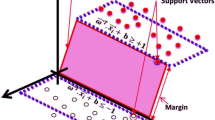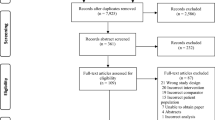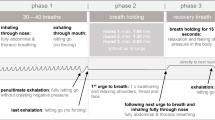Abstract.
Objectives: To compare the accuracy of several finger systolic blood pressure indices (FSBPIs) for the diagnosis of cold-induced Raynaud's phenomenon in vibration-exposed worker groups with different prevalences of vibration-induced white finger (VWF). Methods: The finger systolic blood pressure (FSBP) in a test finger at 10 °C as a percentage of the pressure at 30 °C, corrected for the change in systolic blood pressure in a reference finger [FSBPI(A)] or the arm [FSBPI(B)], was measured in 455 healthy controls and 874 workers exposed to hand-transmitted vibration (HTV). The following FSBPIs were also calculated: FSBPI(C), as the ratio between FSBP in the test finger at 10 °C and FSBP in the same finger at 30 °C; and FSBPI(D), as the ratio of FSBP to arm systolic blood pressure during finger cooling to 10 °C. The finding of zero systolic blood pressure, FSBP(0), in the cooled finger was taken as an objective sign of Raynaud's attack with complete closure of the digital arteries. Results: On a group basis, all FSBPIs could discriminate between the controls and the HTV workers. In the vibration-exposed worker population, the FSBPIs were significantly lower in the subjects affected with VWF than in those without vasospastic symptoms. The lower normal limits of FSBPIs were derived from the results of the cold test in the controls and were found to vary from 50% to 60%. The FSBPI(A) showed the best sensitivity for the detection of cold-induced digital arterial hyperresponsiveness in both the total sample of HTV workers (sensitivity 87%) and most of the vibration-exposed groups with different prevalence of VWF (sensitivity from 79% to 100%). The results of the receiver operating characteristic analysis suggested a higher diagnostic accuracy of FSBPI(A) when compared with the global performance of the other FSBPIs. In the whole sample of HTV workers, the predictive value of a positive cold test varied from 73% [FSBPI(D)] to 89% [FSBP(0)] and that of a negative test ranged between 89% [FSBP(0)] and 97% [FSBPI(A)]. Conclusions: The findings of this investigation and clinical experience suggest that a discriminating threshold of FSBPI(A) <60% during finger cooling to 10 °C is an appropriate diagnostic criterion for the detection of abnormal cold response in the digital arteries of most vibration-exposed workers with a true history of symptoms of finger whiteness at the medical interview.
Similar content being viewed by others
Author information
Authors and Affiliations
Additional information
Electronic Publication
Rights and permissions
About this article
Cite this article
Bovenzi, M. Finger systolic blood pressure indices for the diagnosis of vibration-induced white finger. IAOEH 75, 20–28 (2002). https://doi.org/10.1007/s004200100274
Received:
Accepted:
Issue Date:
DOI: https://doi.org/10.1007/s004200100274




